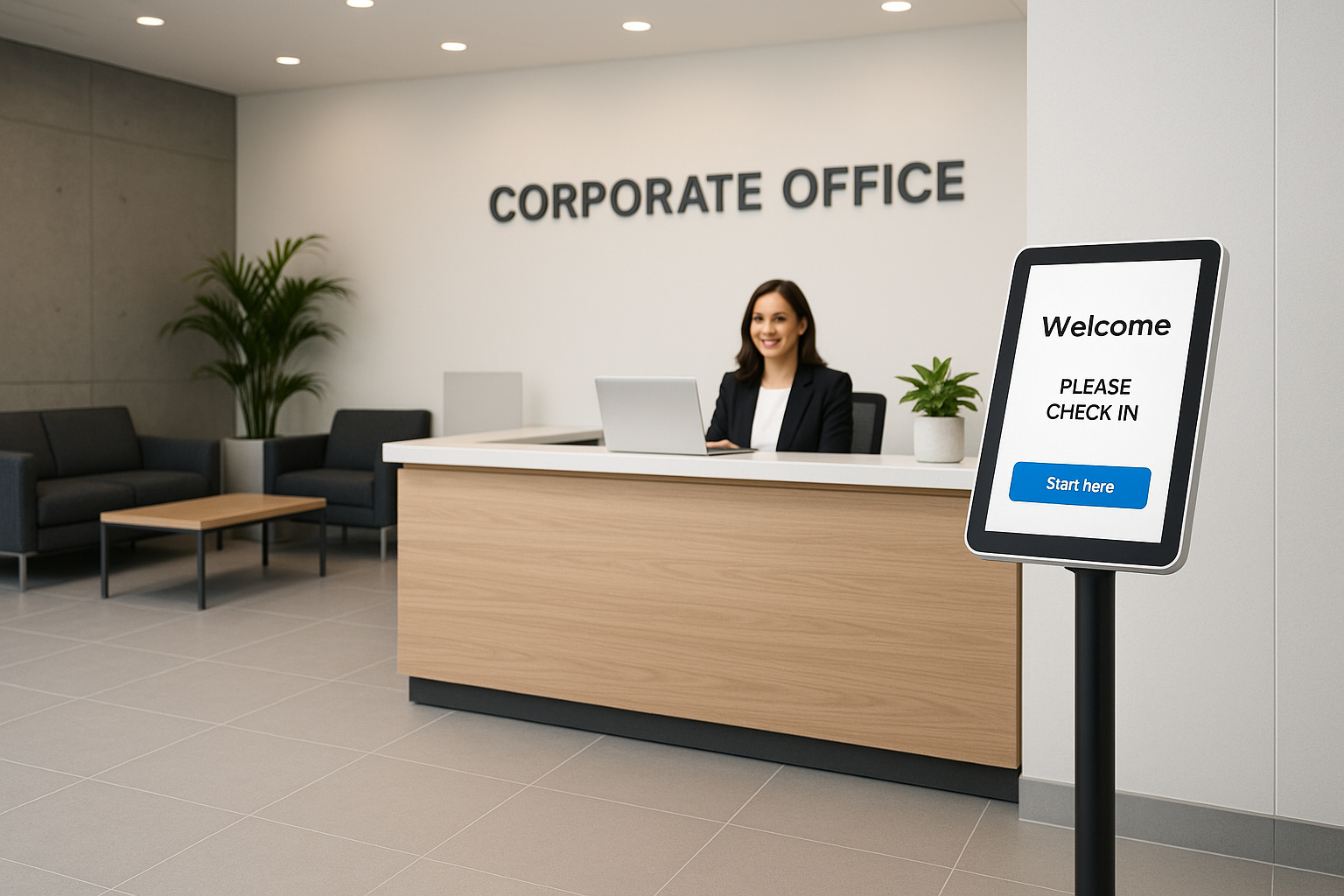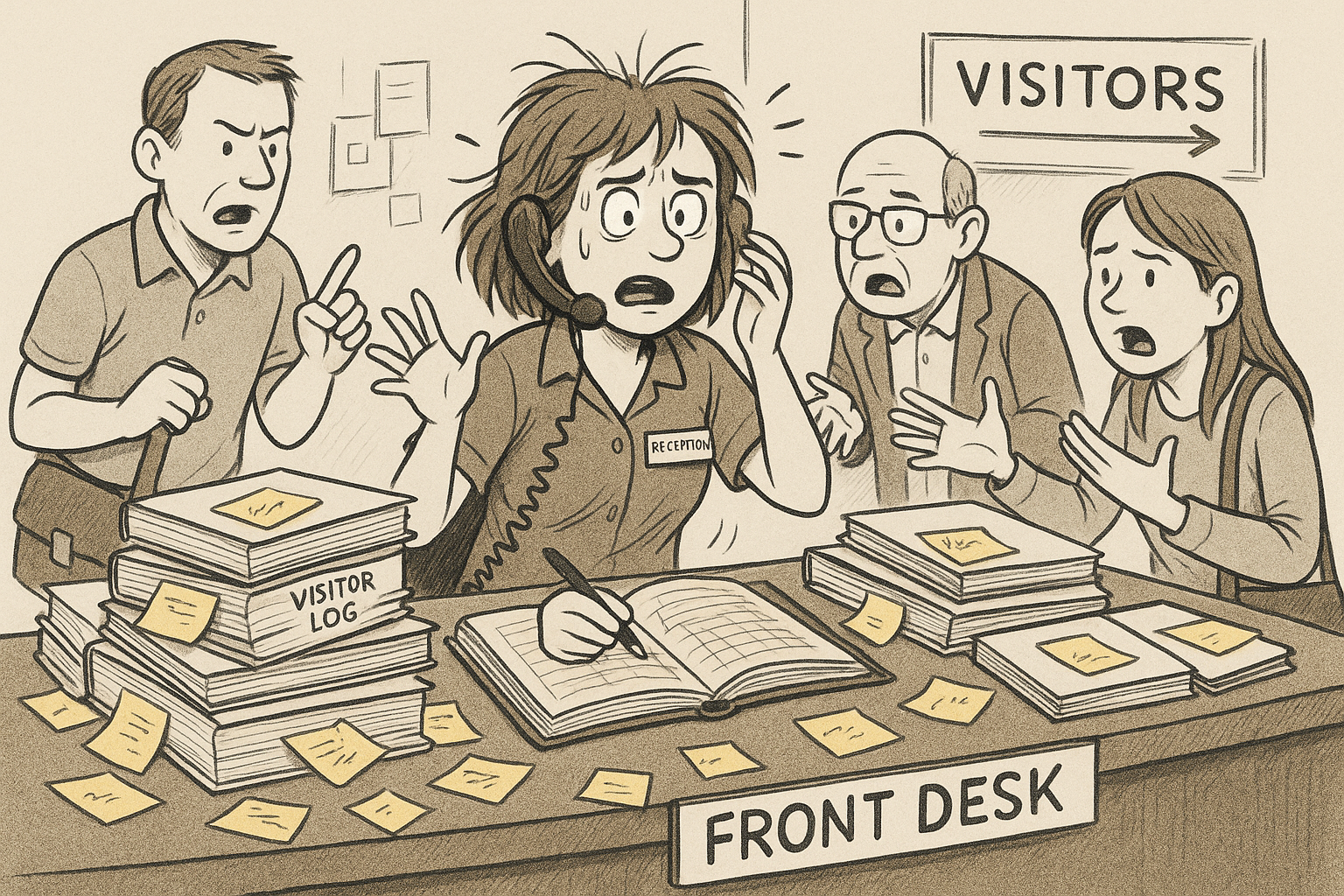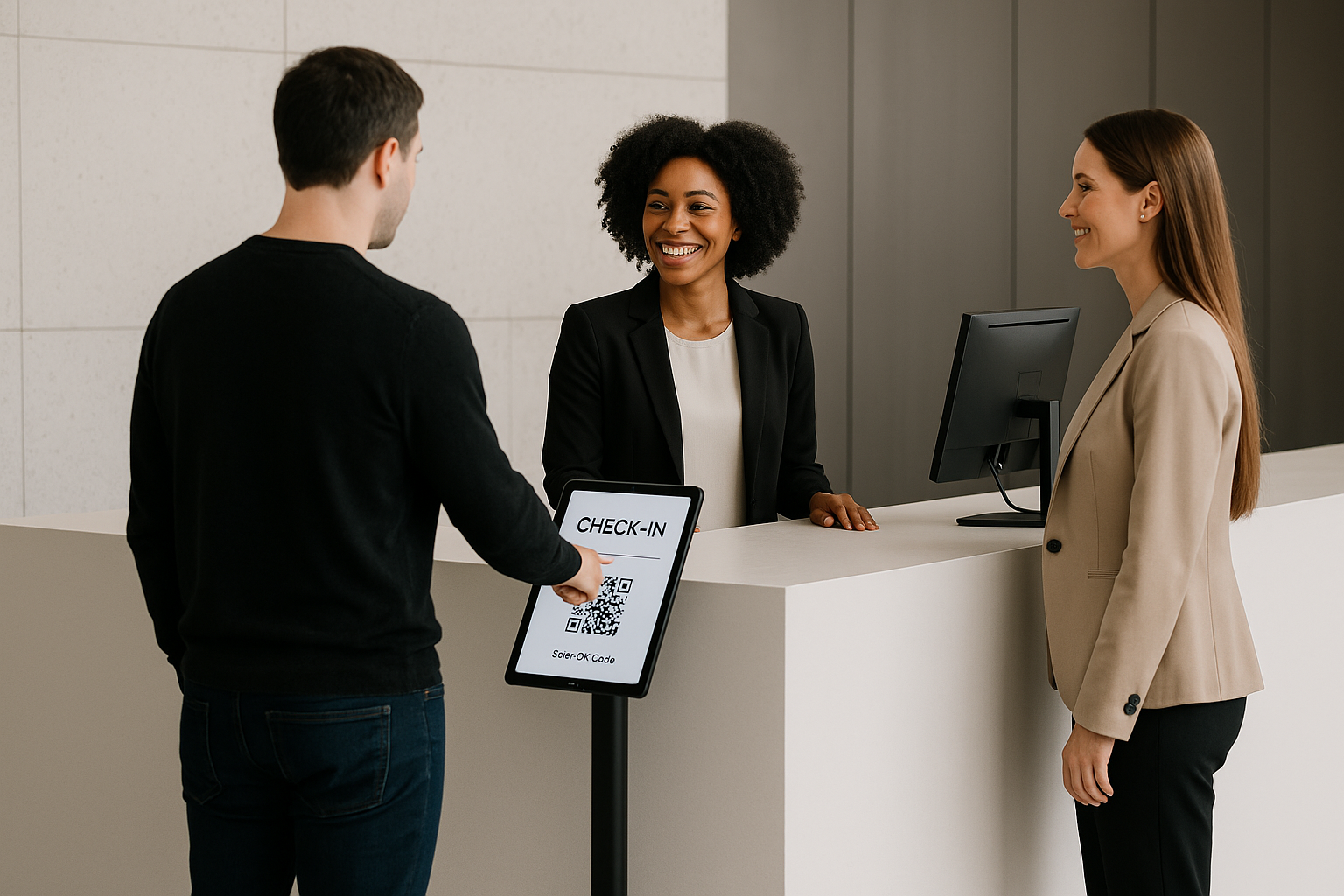
Front desk operations are often the first point of contact for visitors, clients, and partners in any organization. They set the tone for how efficiently a workplace operates and how professional the company appears. However, traditional visitor registration processes—such as manual sign-in sheets and outdated logbooks—can quickly become time-consuming, prone to human error, and susceptible to security risks. This is where visitor management systems come into play, transforming the way businesses handle guest check-ins while enhancing both efficiency and security.
The Challenges of Traditional Front Desk Management

Front desk staff often juggle multiple responsibilities at once, from greeting guests and answering phones to coordinating deliveries and assisting employees. Manual processes can make these tasks overwhelming. For example, handwritten sign-in sheets are not only hard to read but also lack real-time accessibility for security and management teams. This inefficiency can lead to delays, missed appointments, and even security breaches when unauthorized individuals slip through unnoticed.
Additionally, relying on manual processes means staff members must constantly interrupt their work to assist every single visitor, slowing down operations. In busy offices, this can create bottlenecks at the reception area, leaving guests waiting longer than necessary and reducing overall productivity. These inefficiencies ultimately affect not just the visitor experience but also the staff’s ability to perform their primary tasks effectively.
Another major drawback is the inability to track data efficiently. Manual logbooks offer limited reporting or insight into visitor patterns. For organizations that value compliance, reporting, and audits, the lack of digital records creates additional administrative burdens and leaves room for errors.
How Visitor Management Enhances Efficiency

Visitor management systems replace manual processes with digital platforms that streamline the entire check-in experience. With tools like self-service kiosks, QR code scanning, and pre-registration links, visitors can check in quickly and independently. This reduces the workload on receptionists, allowing them to focus on higher-value tasks such as assisting employees or managing security protocols. The automation of tasks like badge printing, data recording, and host notifications eliminates repetitive manual steps, making the process more seamless.
Moreover, visitor management systems improve accuracy and reduce administrative errors. Unlike handwritten forms that can be incomplete or illegible, digital systems ensure all required information is properly captured. Features such as photo capture and digital ID verification add a layer of professionalism and security while speeding up the process. This allows reception staff to operate more effectively and ensures that visitors are processed with minimal disruption.
Most importantly, the use of visitor management enhances the visitor experience. Guests are able to check in quickly without unnecessary waiting, hosts are notified instantly of their arrival, and the overall impression is one of efficiency and innovation. This combination of streamlined operations and improved service quality contributes directly to the company’s professional image and operational success.
Security and Compliance Benefits

One of the most significant advantages of adopting a visitor management system is the added security and compliance it provides. Traditional logbooks offer little in terms of real-time monitoring or reliable records, making it difficult to know exactly who is inside the building at any given time. With digital solutions, organizations can maintain accurate visitor logs that can be accessed instantly in case of an emergency or audit.
These systems also enhance access control by ensuring only authorized individuals gain entry. For instance, visitors may be issued time-sensitive badges that limit their access to specific areas of the building. This level of control not only safeguards sensitive workplace zones but also provides peace of mind for employees and managers. In regulated industries, digital visitor logs are invaluable for demonstrating compliance with safety, security, or privacy regulations.
Furthermore, many systems integrate with existing workplace technologies, such as security cameras, access control doors, and employee directories. This creates a fully connected ecosystem where visitor data is linked seamlessly with security protocols, making the workplace both more secure and more efficient.
The Future of Front Desk Operations

As workplaces continue to modernize, visitor management systems are expected to evolve with even more advanced features. Integration with artificial intelligence, biometrics, and mobile applications will make check-ins faster, more personalized, and more secure. The shift toward hybrid work models also means visitor management systems will need to accommodate both scheduled and unscheduled visits, while seamlessly syncing with workplace calendars and communication tools.
In addition, sustainability goals will drive organizations to adopt paperless solutions for visitor tracking. Digital records not only eliminate the need for physical logbooks but also make data storage more efficient and eco-friendly. For businesses looking to stay competitive, adopting these solutions will not just be about efficiency but also about meeting modern workplace standards.
Ultimately, the future of front desk operations lies in leveraging technology to create a balance between efficiency, security, and visitor experience. Organizations that embrace visitor management systems today will be better positioned to adapt to the evolving demands of tomorrow’s workplace.
RELATED POSTS

Reducing Wait Times with Automated Check-In Systems
In today’s fast-paced business environment, time has become one of the most valuable assets within workplace operations. Employees, clients, and visitors expect seamless experiences when entering facilities, and organizations can no longer afford inefficiencies that...
